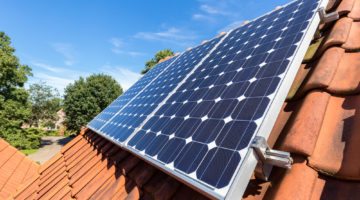
The Headline Cuts To The Feed-in Tariff
On the 1st August 2012, the solar PV Feed-in Tariff saw another round of cuts, with the subsidy dropping from 21p to 16p per kilowatt-hour. This latest fall in the subsidy comes hot on the heels of the previous cut in April this year, where the feed-in-tariff was reduced from 43.3p down to 21p.
Besides the cut to the subsidy, the other major announcement was that the feed-in-tariff payments will now only be guaranteed for 20 years as opposed to the 25 years offered previously, therefore reducing potential future returns.
The Detail
The exact details of all the tariffs are summarised below.
Solar Photovoltaic with less than 4kWp with an EPC band D or higher will drop to 16p/kWh, while band E or lower will drop to 7.1p/kWh.
Export tariff rates will increase to 4.5p/kWh across the board for all new installations erected on or beyond the 1st August 2012.
The Reasons Why & What It Means For You
The feed-in tariff was designed to drive uptake of solar PV systems by homeowners, which it certainly achieved, with over 80,000 homeowners opting to take advantage of the scheme.
Unlike the Renewable Heat Incentive, which is to be funded by HM Treasury, the money set aside for for feed-in-tariffs is paid for by consumers through additional charges in their electricity bills. The idea is if more people start installing solar PV, then more are eligible for feed-in-tariff payments and this adds more cost to the consumer, which may be seen as unfair. So in the interest of fairness in these tough economic times, the government has probably tried to make a balanced decision by cutting the current tariff on offer. On the one hand still committed to feed-in tariffs by keeping them, whilst at the same time trying to protect the ordinary consumer (by lowering the tariff) who perhaps haven’t taken advantage of this scheme as of yet.
The news is not all bad though, despite the feed-in-tariff being cut by over 20%, if you were to go and buy a 4kW solar PV system today, the price you can expect to pay is around £7,000 – £9,000, whereas the same system only 12 months ago could well have cost you in excess of £13,000.
The increased competition in the Solar industry, largely driven by the massive production facilities being built in China and improvements in technology has caused these price drops, and they are expected to continue to fall as time goes on.
The other good thing to come out of the latest feed-in tariff is that the export tariff has been increased to 4.5p / kWh across the board, to better reflect the value of a kWh of electricity bought from the homeowners.
So fear not, the feed-in-tariff has taken a bit of a hit, but installing a system in your home still has a 8-10 year payback period, and perhaps more importantly, it will offer some protection against the utility price rises that appear to have become a permanent fixture in our daily lives.













No Comments yet! Be the first one.